De La Warr Pavilion History
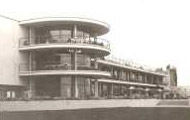
The De La Warr Pavilion is the most famous building in Bexhill. It was the first welded steel frame building in this country and one of the best early examples of the International Modernist style.
The pavilion was championed by the 9th Earl De La Warr, who became Bexhill's first Socialist mayor in 1932.
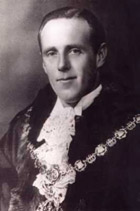
The 9th Earl De La Warr
Before the De La Warr Pavilion was built, Bexhill's main entertainment venue was the Kursaal on De La Warr Parade. This had been built by the 8th Earl De La Warr in 1896 and was originally intended to be a pier, but it was never extended out to sea.
The Kursaal, under its most famous manager, James Glover, provided high-class entertainment for the town's elite and its wealthy visitors.
During the first world war it was renamed the The Pavilion, after one of the national newspapers declared it a scandal that an English resort should have a building with a German name.
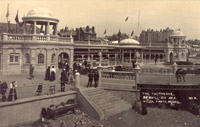
The Colonnade
There had been demand within Bexhill for a new pavilion or 'winter garden' since about 1907; this was partly met by the development of Central Parade in 1910 and the opening of the Colonnade in 1911 but there was still the need for an enclosed structure. As mayor in 1930 Cllr A. Turner Laing had also proposed a £50,000 pavilion scheme behind the Colonnade, and plans were drawn up by the firm of Tubbs and Messer. But the project was not implemented.
In April 1933 the 9th Earl De La Warr proposed a new £50,000 scheme for an entertainment hall on the former coastguard site behind the Colonnade. Through shrewd politics and public consultation the project received overwhelming support from the town. Regarding the project the 9th Earl De La Warr commented: "we all of us want to maintain the existing character of the town but we believe that we can make more of our existing resources".
The Earl was determined that the Pavilion should be publicly funded and not a private venture, saying: "my own view is that if it is going to pay private enterprise it is going to pay the town".
It was decided to ask the RIBA to hold a competition to design the new building and the choice of judge was made by its president Sir Raymond Unwin. He selected Thomas S. Tait, who was respected by established architects but was also known to be sympathetic towards the ideals of new 'modernist' architects. The Bexhill Borough Council prepared a tight brief that indicated that a modern building was required and that "heavy stonework is not desirable".
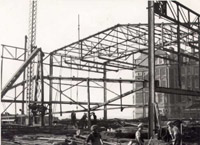
The Pavilion Under Construction
The competition was announced in The Architects Journal of 7 September 1933, with a closing date of 4 December 1933. Two hundred and thirty designs were submitted and they were exhibited at the York Hall in London Road, from 6 February to 13 February 1934.
The results were announced in the Architects Journal of 8 February 1934 and the £150 first prize was won by Erich Mendelsohn and Serge Chermayeff.
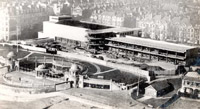
The De La Warr Pavilion in 1935
It was decided to apply to the Ministry of Health for a loan of £80,000 to cover the cost of the project. However, only £70,000 was given, eventually resulting in the abandonment of the plan to redevelop the Colonnade, a swimming pool and modernist statue. Building work began in January 1935 and the De La Warr Pavilion was opened on 12 December 1935, by the Duke and Duchess of York.
The modern style of the building was a shock to many of Bexhill's inhabitants and there was some resentment over the cost of the project; this resulted in the 9th Earl De La warr turning down the offer of Freedom of the Borough in June 1936.

